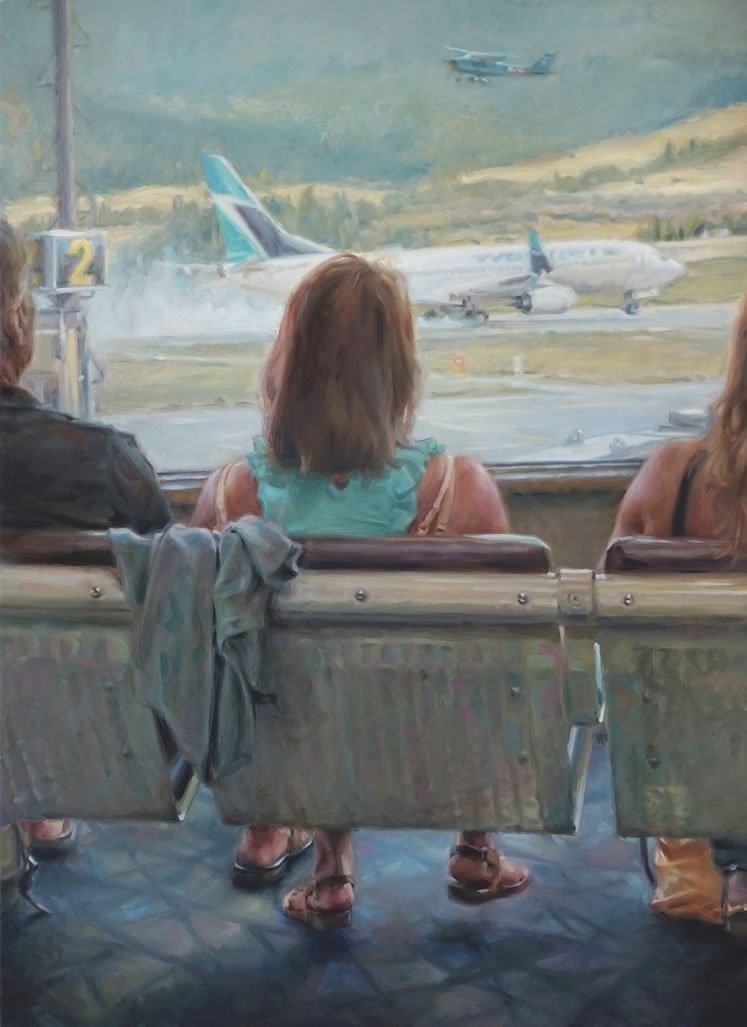The Active Imagination
Orangeville painter Steve Volpe plucks inspiration from everyday experiences then quickly bends it to create a fresh visual narrative on canvas.
A scholarly-looking man leans over a coffee cup, appearing to commune with the tower of apparently well-read books in front of him on the table. The musty odour of the books is nearly palpable. The man’s right hand is held aloft for emphasis while beneath the table his left hand toys with a flaming lighter. On the uppermost book sits a polished red apple.
This is the intriguing scene in Steven Volpe’s 2018 oil painting Balzac’s Café, whose title plays on the names of both the contemporary Balzac’s chain of coffeehouses and the 19th-century French realist author, Honoré de Balzac.
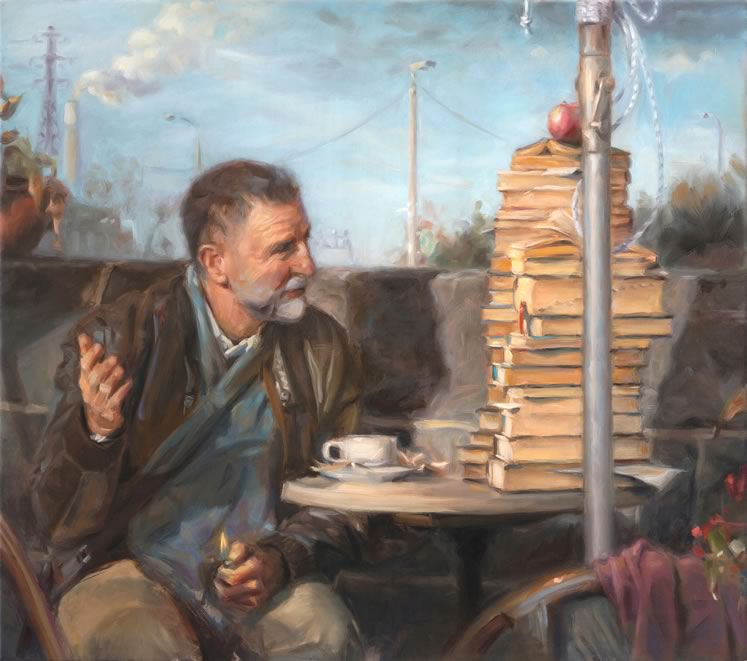
In Balzac’s Café, an erudite man communes with a stack of books over a cup of coffee while he toys with a flaming lighter.

Fluffy clouds and billowing steam frame the artist’s self-portrait in the stark urban landscape of Artist and Hawk.
The painting hangs in the tidy living room of the house Volpe has shared with his wife, Wendy, since the couple moved to Orangeville 21 years ago. The composition is meticulous, unfolding in gestural yet orderly brushstrokes in muted shades of brown and blue. For Volpe, though, the work’s real excitement lies in its concept. “It may start with a little phrase or a part of a photograph,” he says, explaining his broader process as he leans forward to square the edge of the canvas with the frame of his couch. “That’s the catalyst. And then the work begins to bring the scene to life.”
Volpe’s scenes are often held together by a dose of tension, a juxtaposition of the expected and the unexpected that may remind some viewers of traditional surrealism, though the artist doesn’t consider himself part of that tradition. “I like scenes to be plausible, believable,” he says. Nevertheless, an observer is left wondering what led to the moment captured in paint, what’s just outside the frame and what’s about to happen next.
Like the subject of Balzac’s Café, the painter cuts a gentle, erudite figure. On this mid-July morning, he’s clad in a T-shirt and khaki pants. His face mask, indigo with silver dashes, grazes the greying edges of his trim, black hair.
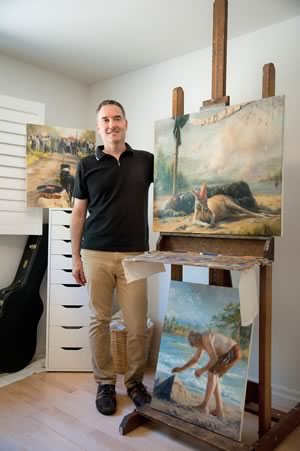
Painter Steve Volpe in his studio next to a work starring a kangaroo in a party hat, called Birthday, and below it, a beach scene, Man and Pyramid. Photo by Rosemary Hasner / Black Dog Creative Arts.
Neither Volpe nor Wendy has roots in Orangeville. The painter grew up in Port Credit, while Wendy is from Colpoy’s Bay near Wiarton. The two met while planning the wedding of Wendy’s university roommate and Steve’s brother and, after getting married themselves, identified Orangeville as the “perfect combination of a small-town feel and access to big-city attractions” – not to mention a spot within driving distance of both their families.
Volpe can’t remember a time when he didn’t make art. “I’ve drawn and painted so far back that it has always been part of who I am,” says the award-winning painter, whose work will be on display at the Museum of Dufferin commencing in April 2022. His extensive list of honours includes the Laura Ciruls Painting Award, administered by the Ontario Arts Foundation, and numerous Headwaters Arts Festival prizes for individual pieces.
As a kid, Volpe carefully copied magazine pictures of cars, hockey goalies and animals. But as he matured and went on to study fine art at Queen’s University his interests changed. “I became drawn to paintings that showed evidence of brushwork that was more expressive and vibrant, but that were still convincing and naturalistic,” he says.
Over the years Volpe’s style became looser, more imaginative. He switched from acrylic to oil. Today, his dynamic, fable-like images – dogs leading protests, men and women in museums, children cartwheeling beside national monuments – are the products of concentrated invention. To create them, the painter often draws elements of French, Dutch and Italian masterpieces into his work and combines ideas from hundreds of photographs, ideas and sketches.
Most of the material Volpe uses for reference are his own. He takes frequent, hasty pictures wherever he goes, so that his œuvre “resembles a travel log” of places he has visited with his wife. “Montreal, Ottawa, Kelowna – they all seem to pop up in paint. And the interiors of galleries and museums I like.”
As the pandemic obstructed travel and galleries stayed closed, Volpe’s archive of images dwindled, but he hasn’t struggled for inspiration. TV is one source. An architectural feature that shows up in the background or an aspect of the cinematography may catch his eye – and fire his imagination.
Volpe’s bright, uncluttered studio is arranged as deliberately as his paintings. Against one wall a wooden H-frame easel supports his work-in-progress. On my visit, this work was Man and Pyramid, a 27-by-20-inch portrait of an older man in a vermilion bathing suit stooped over a sandcastle. Within steps of Volpe’s easel, a waist-high cabinet holds a neat assortment of gesso and canvas primer, bottles of amber-coloured varnish, a palette knife, a blowdryer, a roll of brown paper towel and paintbrushes of various sizes collected in a white and gold McCain’s Steel Cut Oats can. A leather guitar case – Volpe improvises jazz and blues riffs when he needs a break – leans against a white set of drawers. The painter’s desk sits sandwiched between cream-coloured bookshelves laden with artist biographies, birdwatchers’ field guides and books about hockey goalies.
When pictures don’t suffice, Volpe works from life. Both he and Wendy pose for reference. He builds Plasticine models and positions flashlights at various angles to create shadows. While painting Winter Gathering, which depicts a winter songbird exhibit cordoned off as a crime scene at the Canadian Museum of Nature in Ottawa, the artist strung yellow caution tape across his kitchen and prevailed upon Wendy to serve as the model for the woman. To get the arms just right in Beach Game, in which an older man lies on the sand with a yellow balloon in one hand and a pistol in the other, Volpe asked a neighbour to lie on his lawn, arms outstretched, while holding a fake handgun.
Once he has the germ of an idea, he explores possible visual associations and tensions during the one or two months he works on a piece. When he started Balzac’s Café, Volpe, who had encountered a couple in public and liked the man’s “scholarly air, his expression and the gesture of his hand,” found himself wondering what would happen if he placed his subject in conversation with an object rather than another person. And what object might a man like that be speaking to? Could and would the object answer back?
“To laboriously copy a scene as it exists in a photograph … I’d have no interest in painting that.”
“Why would I? You know what the end product is going to be. There are no surprises, no elements of the unexpected.” A moment later he adds, “I think the invention comes through in the look – my paintings look like paintings.”
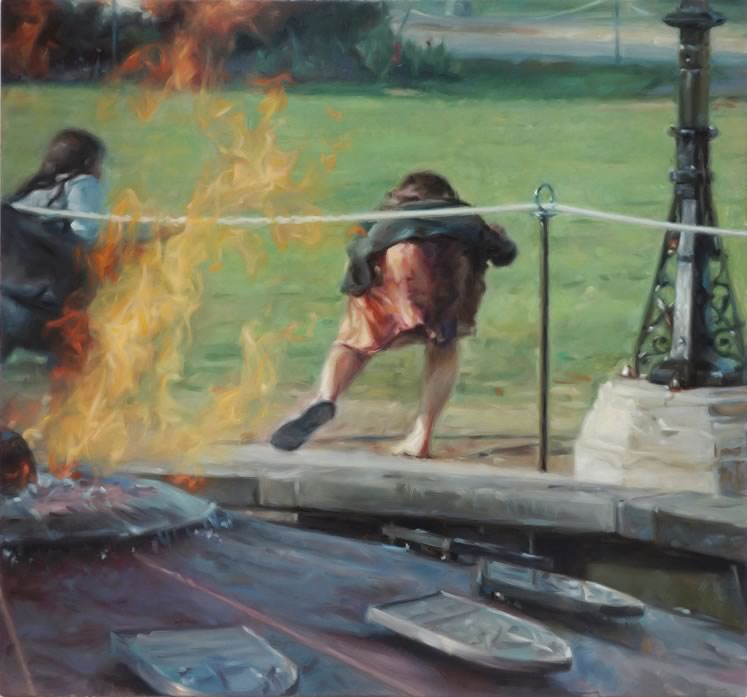
In the unsettling Parliament Hill, women crouch and run near the Canadian capital’s Centennial Flame. Fire is a frequent visual trope in Volpe’s work.
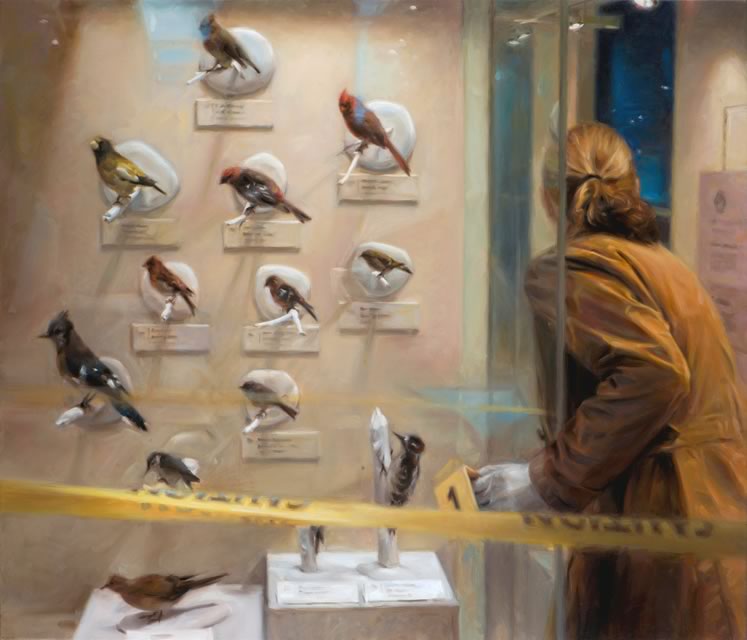
Police crime scene tape creates an air of anxiety around a museum exhibit of taxidermized birds in Winter Gathering.
If a scene he’s developing feels too calm, Volpe is quick to provide a counterweight. The Bystander, for instance, began as a serene portrait of a plein-air painter. In its unnerving, finished state, the painter calmly focuses on his palette as flames shoot from a van down the block. Smoke and fire lend a sense of urgency, as well as compositional cohesion, to several of Volpe’s creations.
Conversely, the artist often adds elements for levity. Birthday, in which a figure languishes on a Kelowna beach while smoke-obscured flames overtake a distant forest, features a kangaroo sporting a carrot-coloured party hat. “It’s about balance,” Volpe says.
Negotiating that balance isn’t easy. Before setting up his easel, Volpe uses Photoshop as a drafting tool. He spends hours adjusting underpaintings, and readily wipes large swathes of paint from his canvas. If a composition isn’t working, he’ll cut the canvas down to frame his preferred image. Describing his own process, Volpe invokes the work of 18th-century British artist Joshua Reynolds on his oft-revised masterpiece The Infant Hercules Strangling Serpents in His Cradle: “There were 10 pictures under it, some better, some worse.”
While Volpe admires – and often echoes – centuries-old works of art, he also embraces current commercial subject matter. His paintings include smoke alarms, name tags, welding torches, plastic menus and graffiti. In Arrival and Departure, a plane bearing the WestJet logo takes off beyond an airport window. In Artist and Hawk, an outsized disposable Tim Hortons cup looms in the distance as Volpe himself releases a red-tailed hawk. “It’s all part of contemporary society,” he says, shrugging.
Originally scheduled for 2020 but postponed by the pandemic, the exhibit in April will feature up to a dozen of Volpe’s most recent works. When pressed to reveal his next project, the artist’s hazel eyes glint with amusement. He acknowledges plotting many canvases but declines to share specifics about future work. He does, however, express the wish to invent more and continue loosening his style. “But,” he says, catching himself, “I don’t want to diffuse that energy by talking about it. I prefer to reveal the painting when it’s done.”
Related Stories
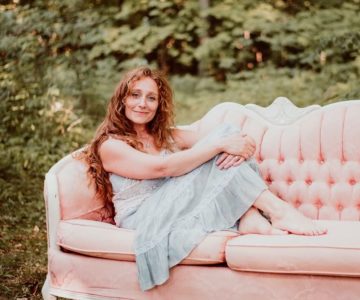
Ancestral Footsteps
Sep 24, 2021 | | ArtsMichelle Grierson’s compelling first novel is a fluid mix of myth, magic and the power of “blood memory.”
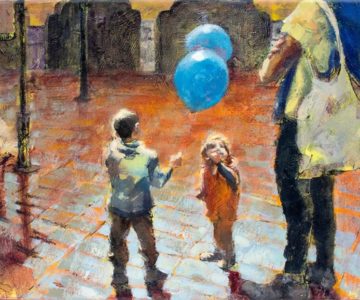
Kayla Jackson
Sep 24, 2021 | | Artist in ResidenceAlton artist Kayla Jackson finds her muse in the historic streets of her hometown and commits its architecture and character to canvas.
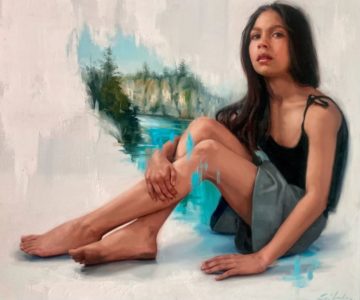
Sara Sniderhan
Jun 22, 2021 | | Artist in ResidenceSara credits a physical move from Toronto for moves she’s been making artistically.
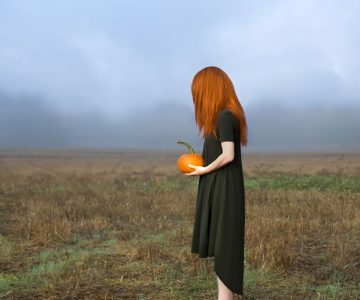
Patty Maher
Sep 18, 2020 | | Artist in ResidenceWhen she moved to Caledon from Toronto ten years ago, Patty says she discovered the backdrops she never knew she needed.
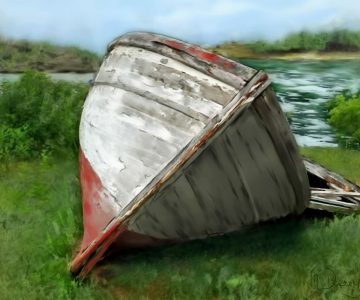
Margaret Derry
Jun 25, 2020 | | Artist in ResidenceMargaret uploads her own photos as starting points, then reimagines the backgrounds and layers on “paint” using programs that mimic everything from brush strokes to pigment density.
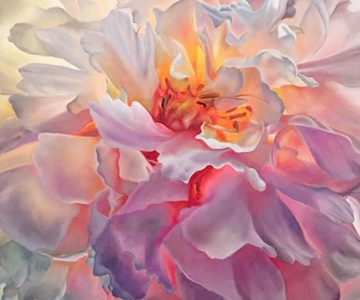
Agata Wisniewski
Mar 24, 2020 | | Artist in ResidenceAgata replicates a flower’s delicate petals and crinkly layers, imbuing each image with what she calls “illumination from within.”





